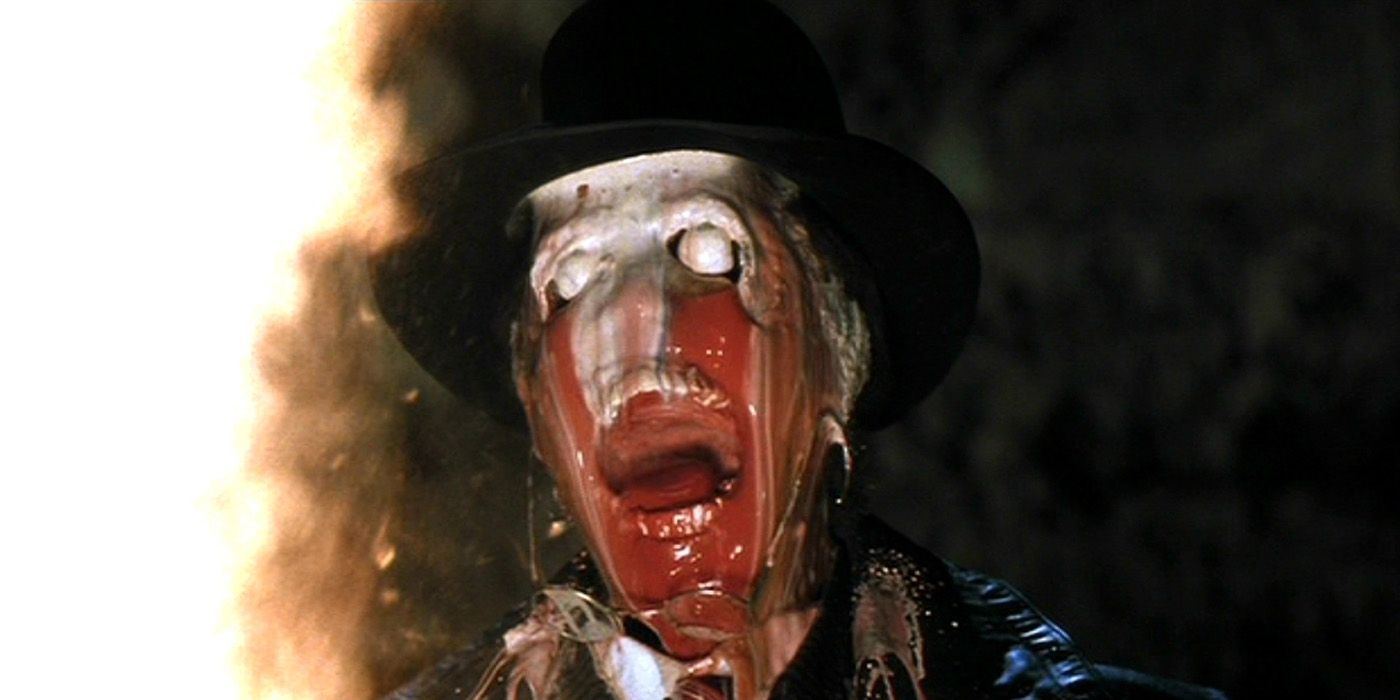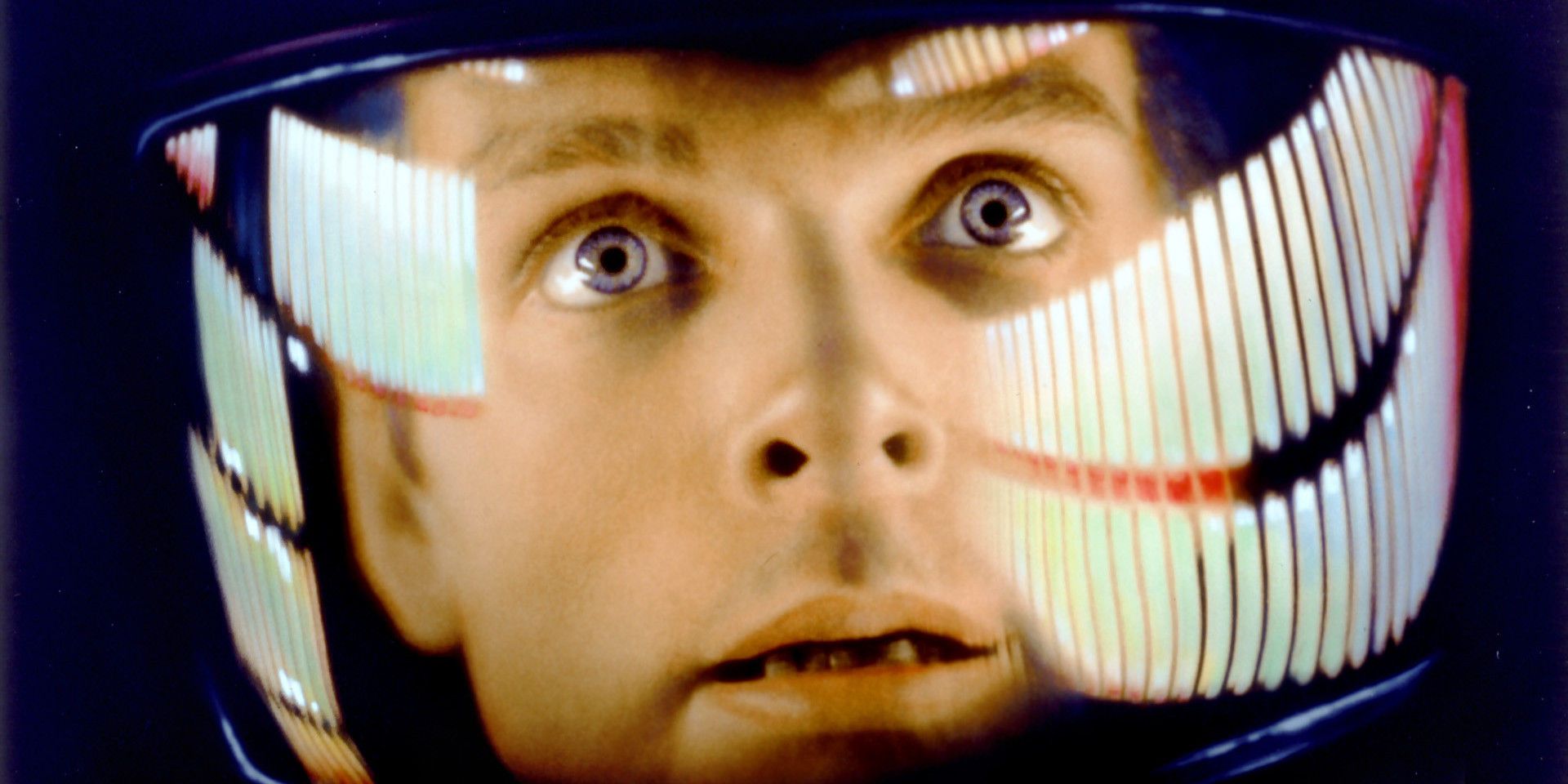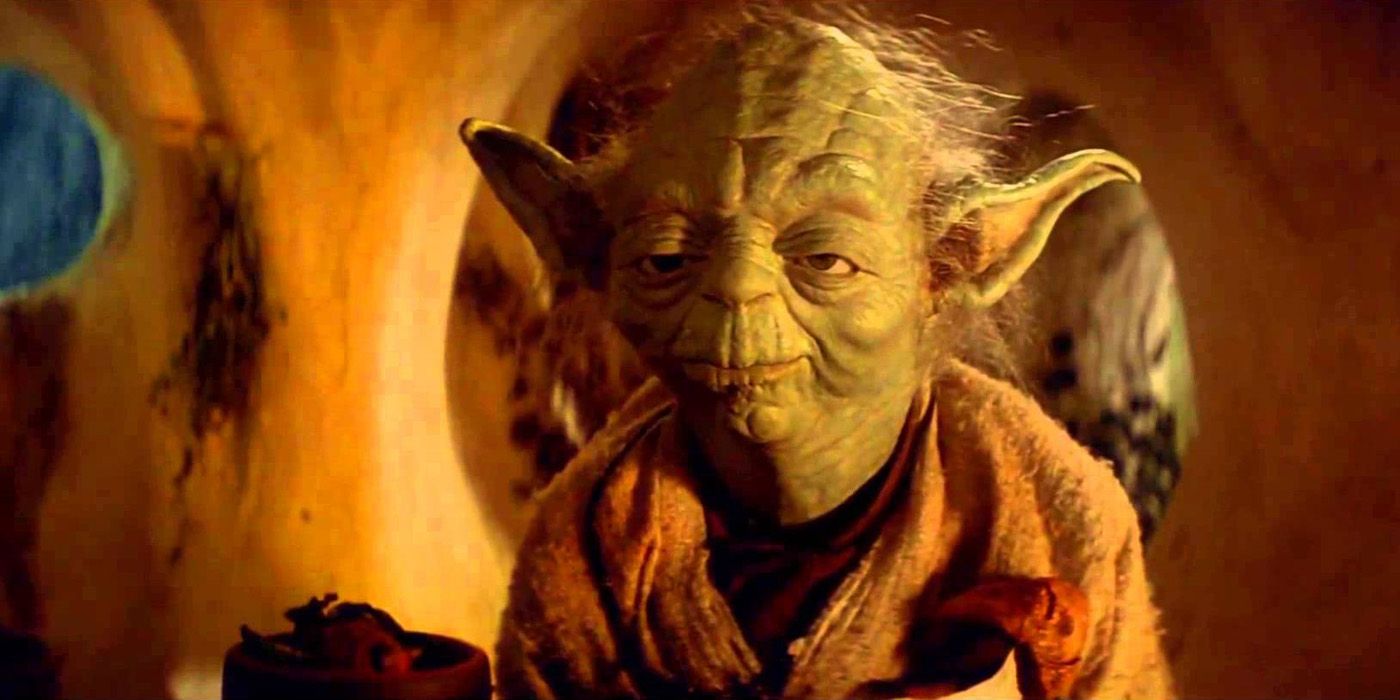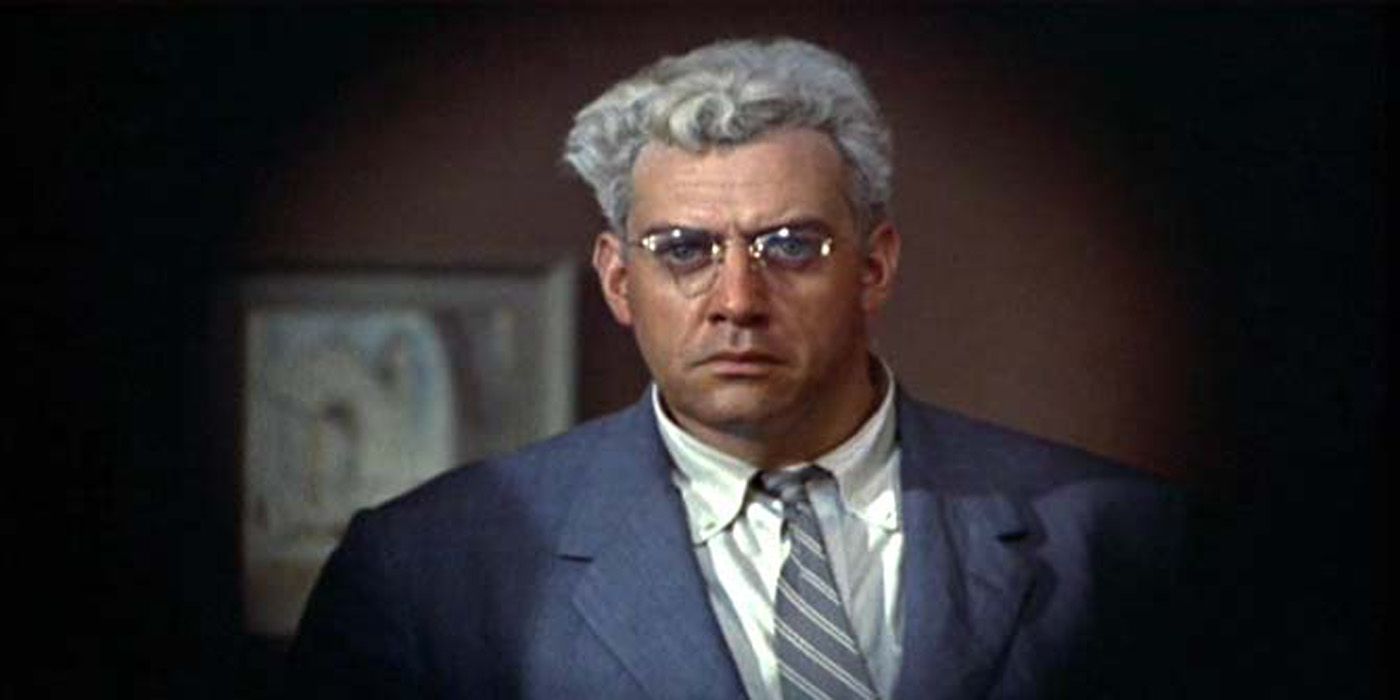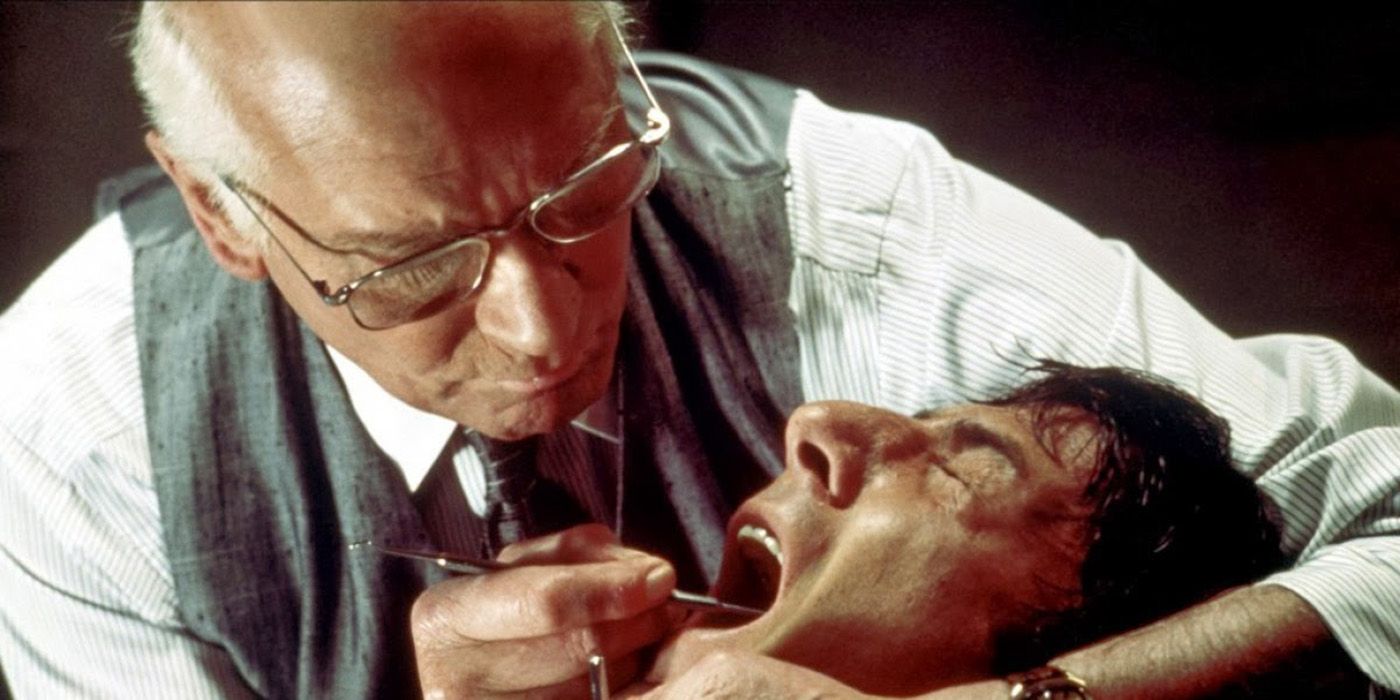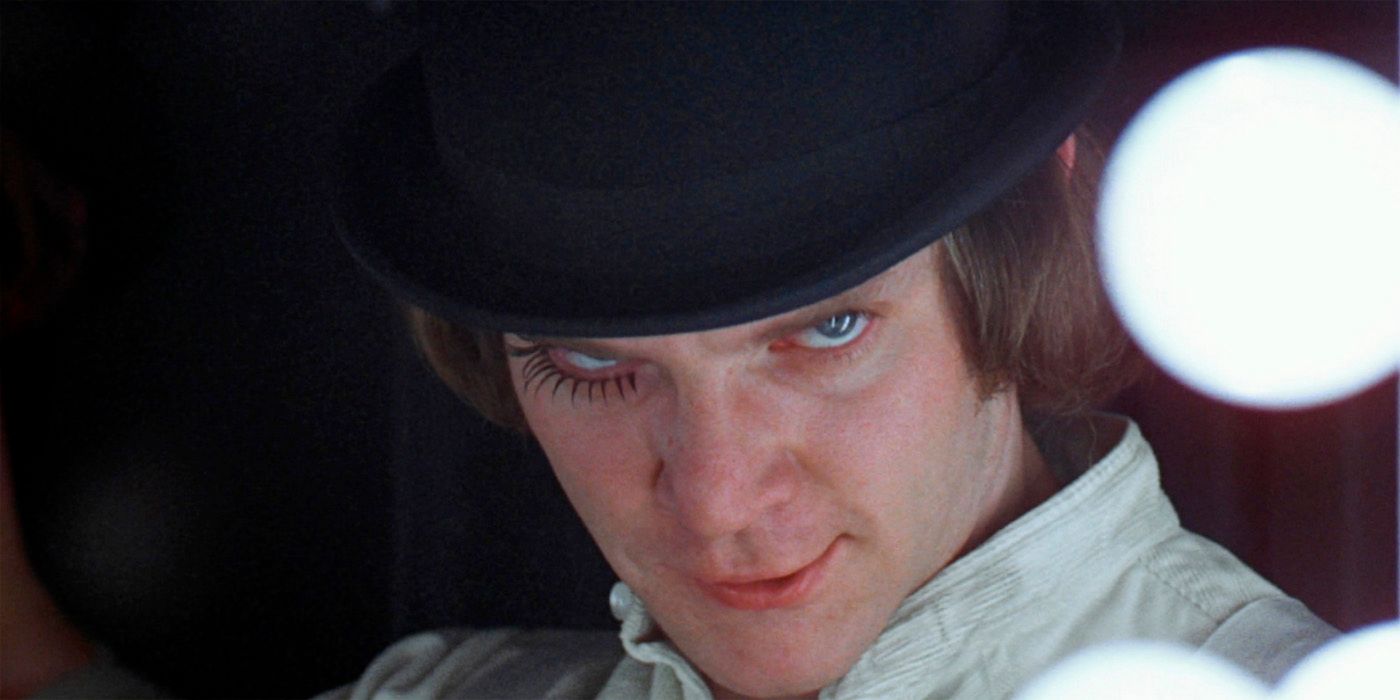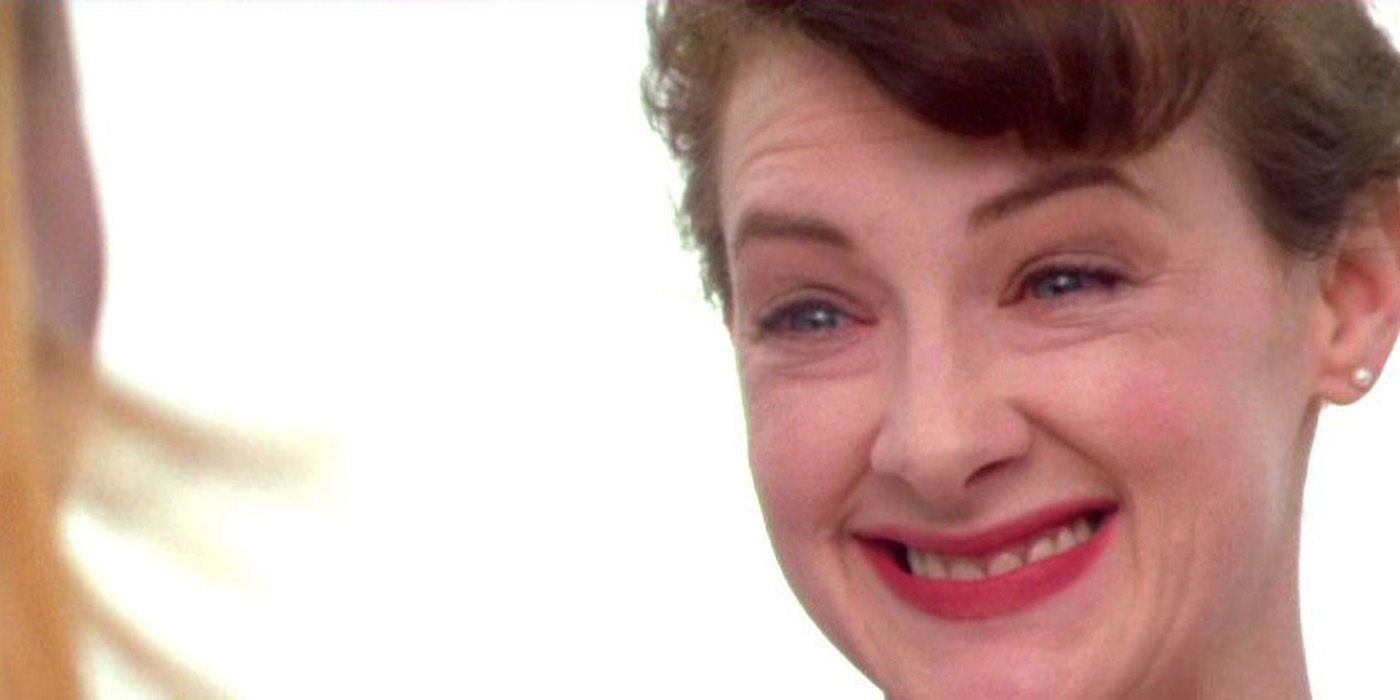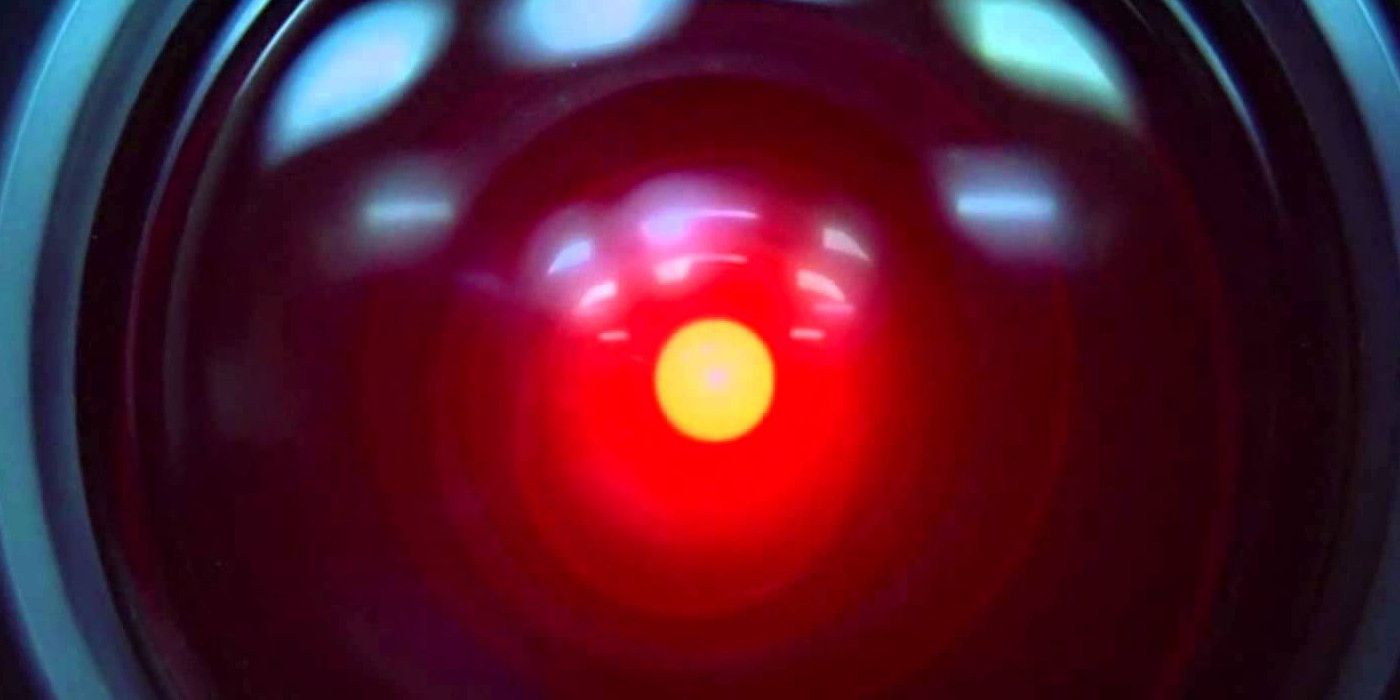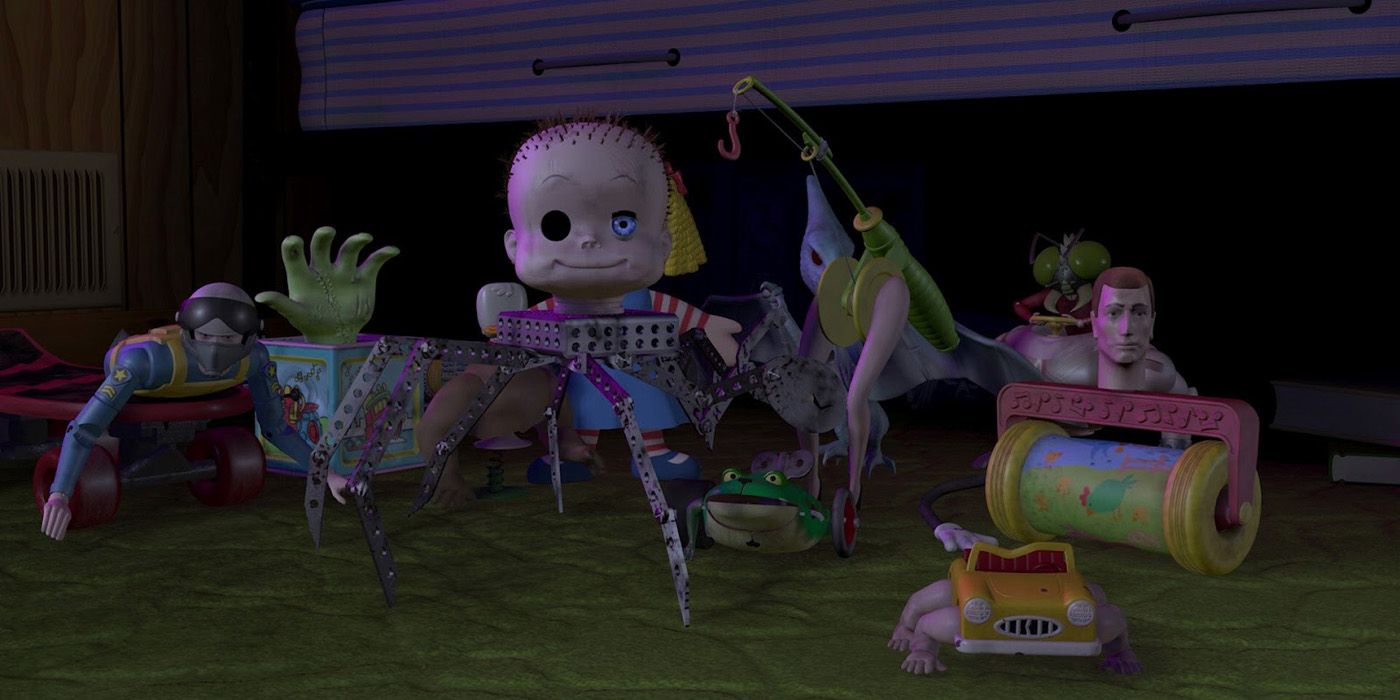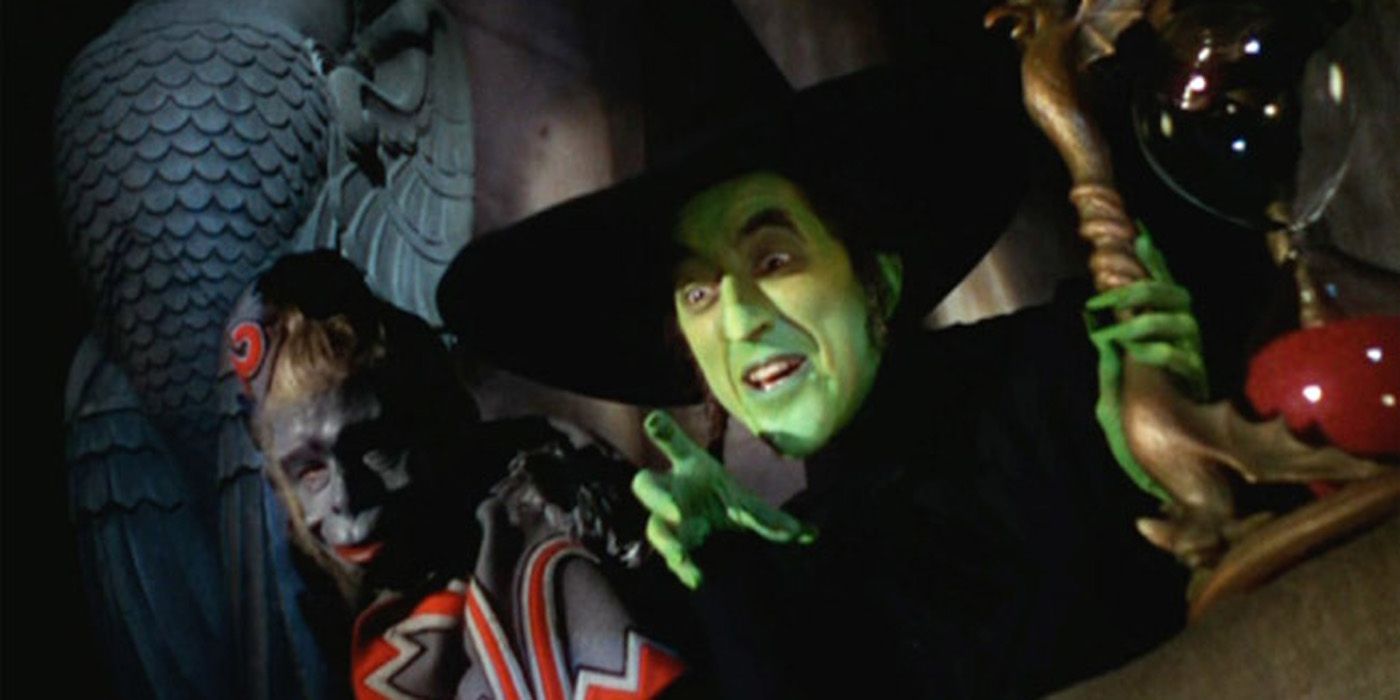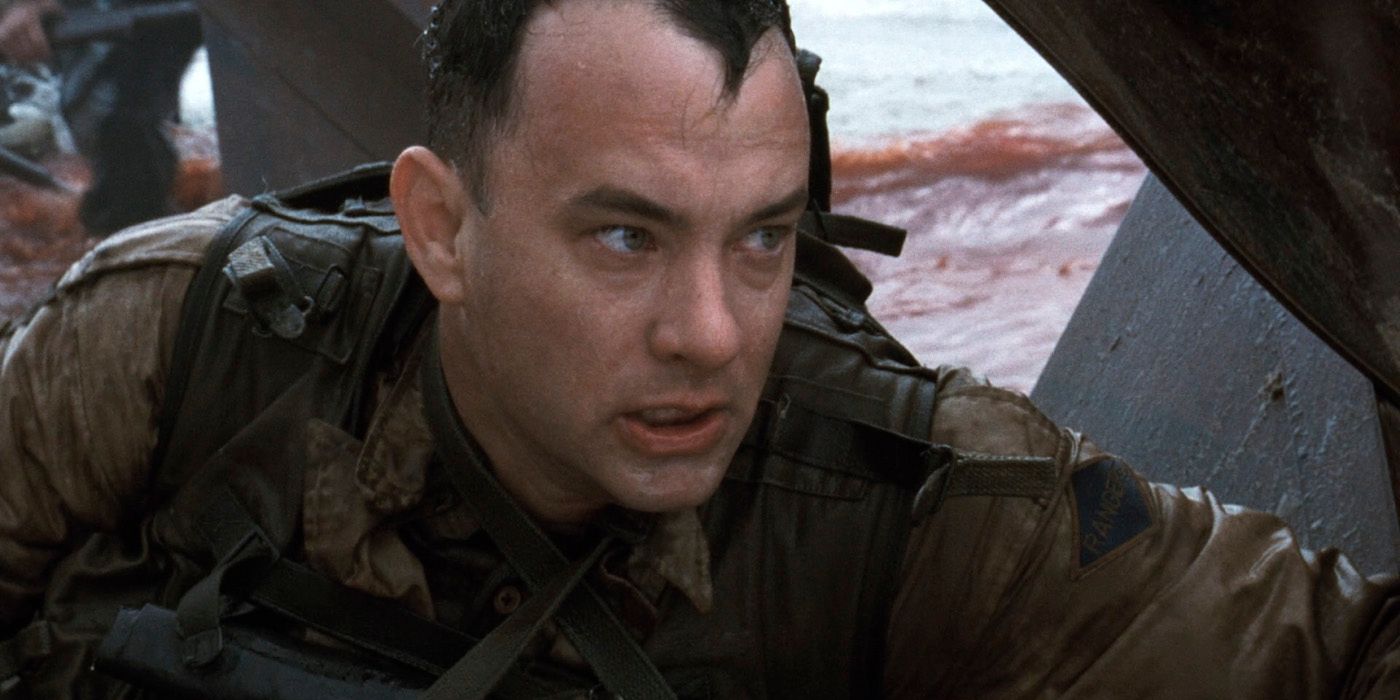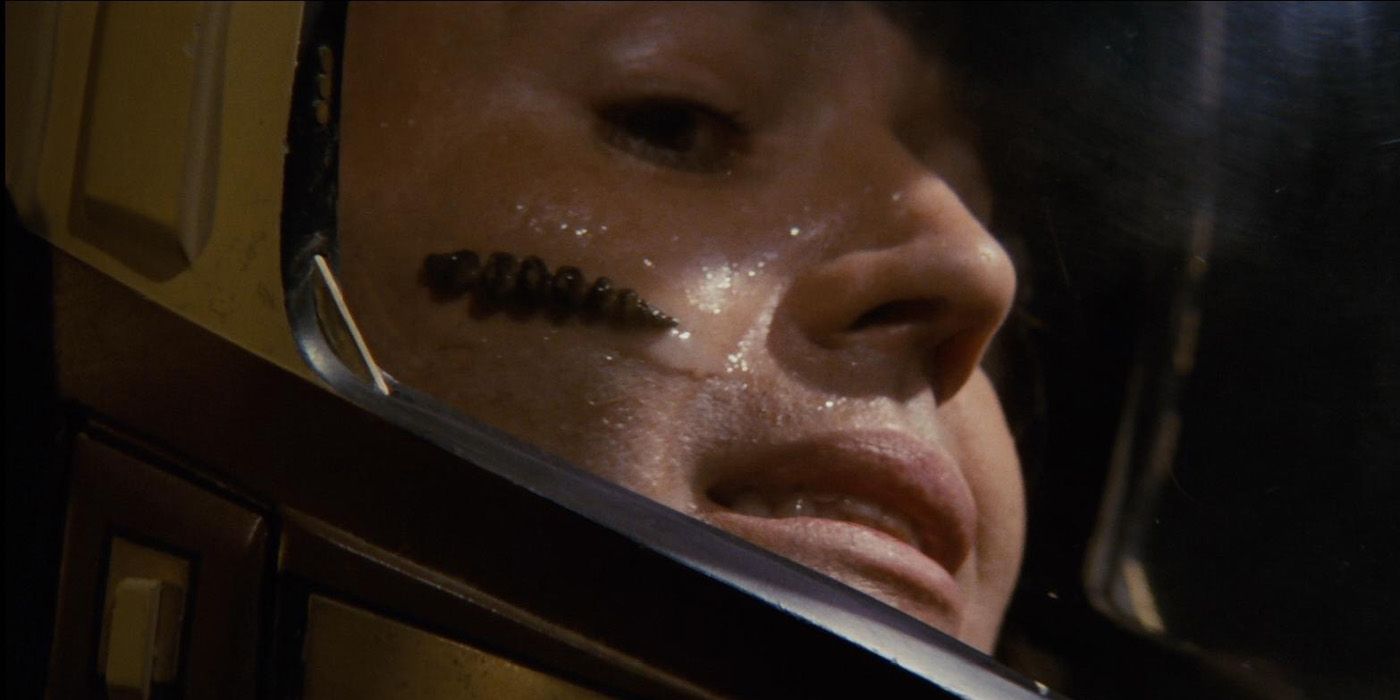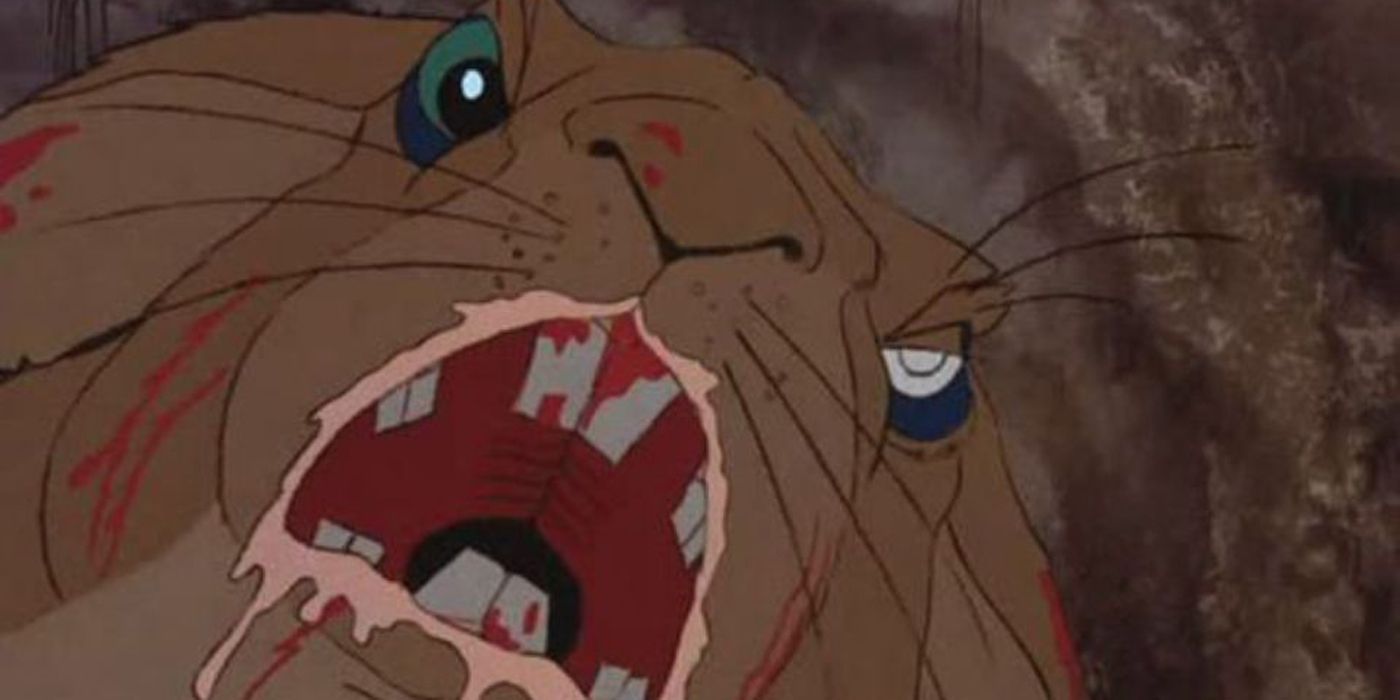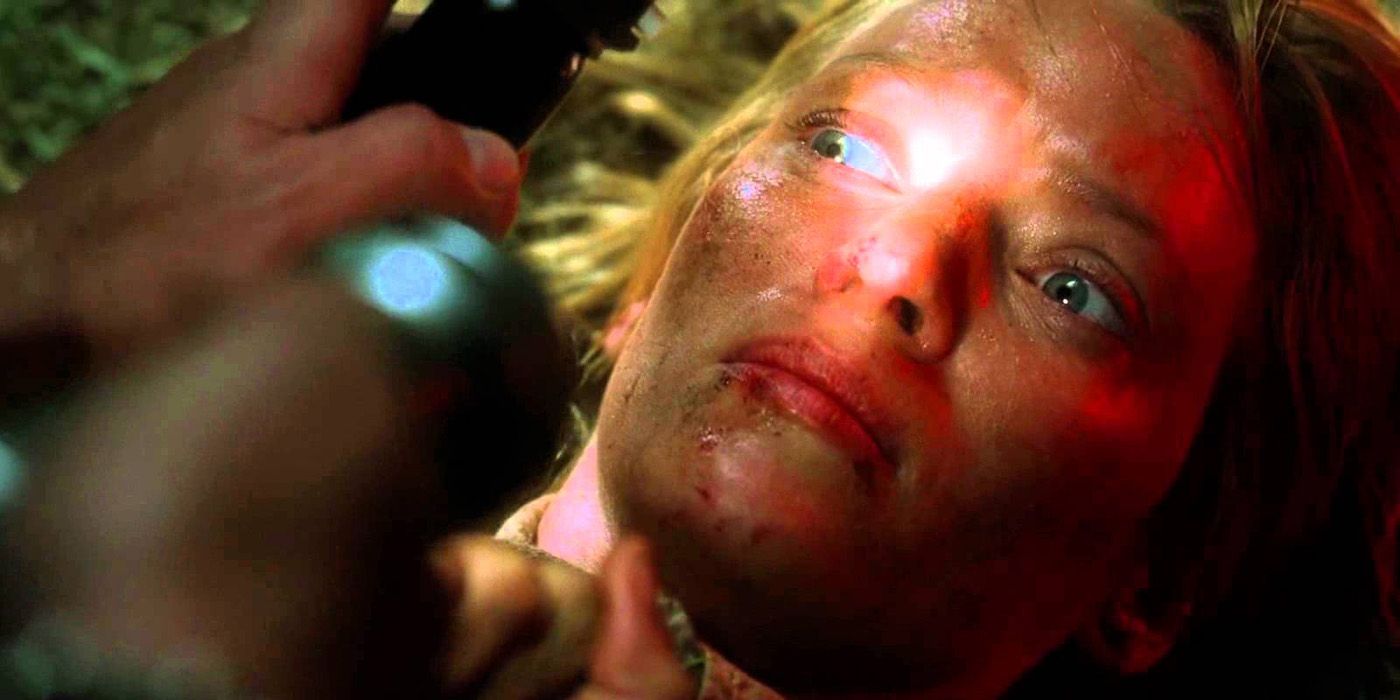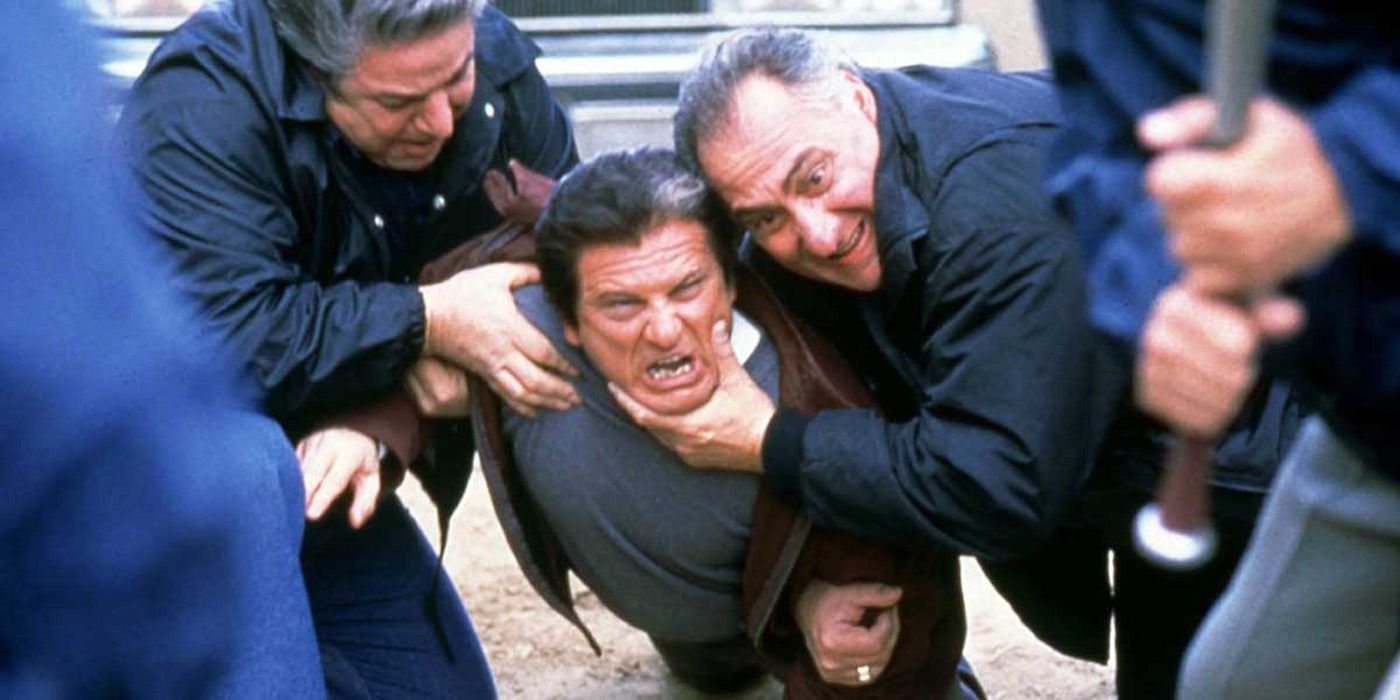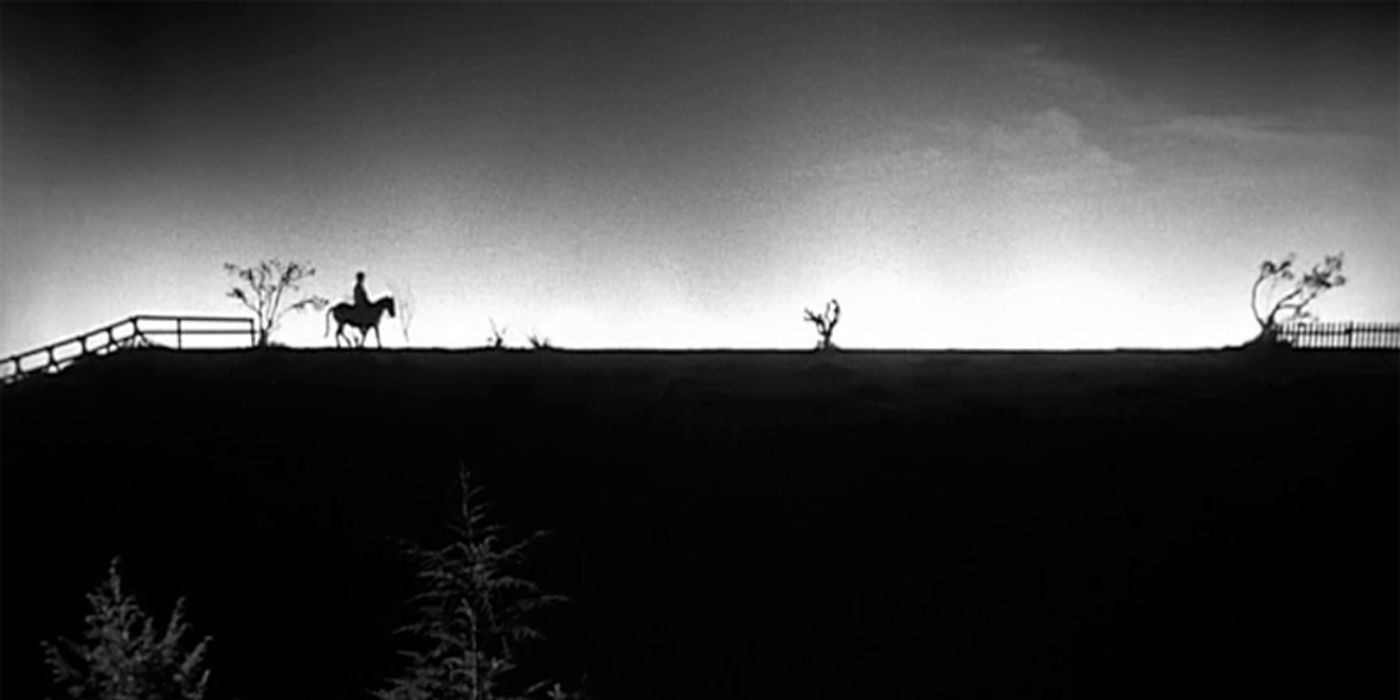Trying to scare movie-goers is a pretty thankless task these days. The horror genre has to work harder than ever to produce any kind of reaction from an audience who've seen it all before. Done properly, a skilled director can still leave us scarred for life with a well delivered shock. When done badly, they're more likely to elicit an exasperated eye-roll or, much worse, laughter.
But the scary scenes in non-horror movies are sometimes the most terrifying, precisely because they have no business being there and are completely unexpected. One minute you could be watching a wholesome animated joy-fest about childhood toys coming to life and the next you're checking eBay to see how much you can sell your childhood toys for... just in case they come to life.
So, here are our top 15 Scariest Scenes In Non-Horror Movies, based on the moments that most frightened the bejesus out of poor, unwitting viewers.
15. The Empire Strikes Back (1980)
The Empire Strikes Back taught young Star Wars fans that, given enough sass, even little green puppets can be bloody terrifying.
After the dramatic escape from Hoth, Luke travels to the swampy homeland of the Jedi master, desperate to learn the ways of the Force. Instead of the "great warrior" he's expecting, he instead finds a pointy eared little troll who spends a long time being intentionally annoying. Upon finally revealing himself as Yoda (not the biggest surprise on Luke's horizon, to be honest) he refuses to teach him, criticizing him for his recklessness and lack of patience. So Luke does what Luke does best— whine: "I won't fail you! I'm not afraid"
How do they get so much expression and emotion from a puppet? A tiny raise of the eyebrows and a slight lift of the ears was all it took to give a tacit warning of the horrors awaiting our unprepared hero. Leaning in, Yoda's voice drops to a menacing growl. "You will be! You... will... be!" The horrified expression on Luke's face pretty much summed up our feelings sitting in the cinema, and none of us looked at Yoda in quite the same way again.
14. Rear Window (1954)
One of the very best from the very best, Rear Window ratchets up the tension to an unbearable degree and then delivers a series of heart stopping scares.
James Stewart plays L.B. "Jeff" Jeffries, a photographer holed up in his apartment with a broken leg, spying on the lives of his neighbours across the courtyard from the discomfort of his wheelchair. He convinces himself that one, salesman Lars Thorwald (Raymond Massey), has murdered his wife and disposed of her body. He recruits his adoring girlfriend Lisa (Grace Kelly) to break into the apartment to look for clues, where Thorwald catches her in the act. Although the police arrive before any harm can come to her, Jeffries's secret is up.
The moment Thorwald stares through the lens pointed at him from Jeffries's apartment is a stomach-dropper. We know Jeffries is as good as defenceless; alone and immobilized.
With Lisa taken away by the police, Thorwald's apartment is left in complete darkness. And Jeffries's phone rings.
This is Hitchcock at his peak. He knew that it's always the things we can't see that terrify us the most, and here, we can only experience what Jeffries does. The silence on the other end of the phone and the gentle click as the murderer hangs up; the sound of the elevator starting far below; the footsteps outside Jeffries's apartment, and the light underneath the door going out.
Rear Window remains one of Hitchcock's greatest thrillers; intriguing, macabre, and brilliantly executed.
13. Raiders of the Lost Ark (1981)
It was never going to end well for the Nazis once they messed with Indiana Jones and God. Admittedly, they give Indy a run for his money-- before the Almighty gets involved and renders all his efforts pretty much redundant. (Yeah, thanks for ruining it, The Big Bang Theory.) Nevertheless, Raiders of the Lost Ark is probably Spielberg's most enduring outing.
Indiana Jones (Harrison Ford) is racing the forces of evil to find the lost Ark of the Covenant, an artifact of unspeakable power believed to hold the ten commandments. In the process, he's chased by huge boulders, buried up to his bullwhip in snakes, narrowly misses being chopped up by a propellor, and hitches a ride on the outside of a submarine. All in a day's work.
Ultimately, Indy ends up tied to a post with his-ex girlfriend as the head Nazis and all-around bad eggs decide to peek inside the Ark before handing it over to Hitler. Finding nothing but sand, it seems they've got themselves a dud until furious spirits emerge to zap the more fortunate villains with holy lightning. Our three main heretics aren't let off so easily. Amid agonized screams, there's righteous face-melting and divine head-exploding galore as the wrath of God is brought unto the fallen.
Spielberg's never been shy about dealing out shocks, even when he's catering to a younger audience and, just as Jaws stopped us from wanting to go swimming, it was this scene that put a generation of children off ever wanting to open ancient artifacts.
12. Marathon Man (1976)
Doing for the dental profession what The Shining did for the hospitality industry, Marathon Man is another example of the power of suggested horror.
Remembered mainly for one terrifying scene, the story follows Babe Levy (Dustin Hoffman), who falls into the hands of fugitive Nazi war criminal Dr. Christian Szell. Known in the death camps as The White Angel, Szell is based heavily on infamous doctor Josef Mengele and played to chilling effect by Laurence Olivier.
Involved in a diamond smuggling operation, Szell is forced out of hiding and travels to New York, where he has Babe kidnapped and tortures him for information. Playing on everyone's primal and totally justified fear of dentists, we find Babe strapped to a chair while the immaculately groomed and eerily calm Szell repeatedly asks, "Is it safe?" As Babe babbles his ignorance, the doctor carefully unrolls his dental implements.
The original version of what follows caused so many in the test audiences to be sick that it had to be shortened by eight minutes, but the scene is probably the stronger for it. We know what's going on inside the poor man's mouth; we don't need to be shown— his screams are enough. The helplessness of Babe's situation, both physically and psychologically, make it all the more terrifying. He doesn't know what Szell's looking for any more than we do. It becomes disturbingly easy then to imagine ourselves in his place, and there's nothing more terrifyingly convincing than our own imaginations.
11. A Clockwork Orange (1971)
Like the novel on which it's based, Stanley Kubrick's adaptation of A Clockwork Orange was hugely controversial on its release. In fact, he withdrew the movie from circulation himself after he and his family received death threats over it.
Set in a future Britain, it's the story of a young sociopathic hoodlum called Alex and the horrific crime spree he undertakes with his gang, known as droogs—from the Russian word for "friend."
On the night we join them, the gang break into the secluded home of a writer, where they beat him to the point of paralysis and rape his wife. What makes the scene even more horrifying is Alex performing an a cappella rendition of "Singin' in the Rain" throughout the attack.
Taken from the eponymous 1952 movie, "Singin' in the Rain" is one of the most unashamedly joyful songs ever released—embedded in our consciousness as we watch a lovestruck Gene Kelly dance down a New York City street in a downpour. Appropriated by Kubrick, it's twisted into something shocking and horrific, and our familiarity with the original version makes it even more distressing. Coupled with some unsettling camera work—handheld, distorted shots of the masked intruders in close up—the scene leaves a harrowing impression that lingers long in the memory.
While A Clockwork Orange is certainly one of Kubrick's best, it's definitely not for the fainthearted.
10. Arlington Road (1999)
Jump scares are sometimes seen as a lazy way to scare audiences. When done right, however, they still have the power to take seize us and produce some heart-stopping moments. Hitchcock did it properly in Psycho, and David Fincher nailed it in Se7en. But those are horror movies and horror movie scenarios. You're almost waiting to be scared.
In Arlington Road, the jump scare is brilliantly effective because the situation is so suburban and familiar.
Michael Faraday (Jeff Bridges) is a college professor teaching a course on the history of terrorism. When new neighbors Oliver and Cheryl Lang (Tim Robbins and Joan Cusack) begin to arouse his suspicions, he spirals into an obsessive pursuit that initially puts him at odds with girlfriend Brooke (Hope Davis). But when she later notices strange behaviour from the two, she stops at a payphone to contact Michael, convinced he's right. As she hangs up and turns around, we see Cheryl Lang standing right behind her.
The jump scare is expertly handled and is enough to bring you off your seat. But the real chill is watching the change in Cusack's face. Her beaming, neighborly smile slowly fades and her face hardens into an "I know you know" expression that tells us we won't be seeing much more of Brooke.
It's been suggested that Arlington Road was ahead of its time, and it's certainly an underrated movie with one of the most non-Hollywood endings in recent years.
9. 2001: A Space Odyssey (1968)
Depending on your point of view, 2001: A Space Odyssey is either the most important and influential movie ever made or a slow-moving, boring, and incomprehensible pile of bewilderment.
But even the harshest critics can usually agree on two things: one, the movie's special effects were lightyears ahead of their time (remember this was made in 1968, a full year before NASA faked the moon landing!) and two, Kubrick's brilliance somehow turned a glowing red dot into one of the most sinister villains in movie history.
The HAL 9000 (voiced by Douglas Rain) is the sentient computer on board Discovery One, a survey spacecraft dispatched to Jupiter. Deep into the mission, it becomes clear that HAL's circuits aren't functioning correctly and he kills all but one of the crew members. The remaining astronaut, Dave (Keir Dullea), sets about deactivating the malfunctioning computer.
Everything about the scene takes an agonizingly long time; from Dave clumsily moving between the different sections of the ship to unscrewing the various control panels. All the while, HAL pleads for his life in his calm and expressionless voice. He implores Dave to think about what he's doing and "take a stress pill". The only sounds we hear are HAL's voice and the fevered breathing of the astronaut.
As Dave starts removing HAL's cognitive circuits, the voice slows and becomes deeper. With his mind sliding away, HAL reverts to his earliest programmed memories, eventually droning out "Daisy Bell", the first song ever sung by a computer.
8. Toy Story (1995)
Toy Story is cinematic proof, if it was needed, that some kids are revolting and deserve to be traumatized. It also confirmed what we all secretly knew; our childhood toys came to life when we weren't looking.
The first full-length movie from Pixar, Toy Story follows two rival toys; cowboy Woody, longtime favourite playmate of youngster Andy, and a recently arrived interloper, Space Ranger Buzz Lightyear. Riddled with jealousy over this new rival for Andy's affection, Woody arranges Buzz's downfall, only to be cast out himself by the other toys.
Eventually, the pair find themselves captured by evil neighbor Sid, where they meet his monstrous experiments—mutilated toys with transplanted heads and limbs, along with other signposts to a future serial killer's MO.
Determined to help, Woody and Buzz formulate a plan to free the toys from their hellish existence.
The scene where Sid's mutant creations come to life to terrify the boy into changing his ways is brilliantly staged and genuinely scary. The grotesque freaks emerge from muddy pools and sandpits and slowly advance on the hapless bully, sending him into paroxysms of terror. Eventually Woody's head spins round Exorcist-style and he suggests Sid learns to, "Play nice!"
Toy Story showed that children's movies could still be edgy and has been voted one of the best animated films ever made.
7. The Wizard of Oz (1939)
Monkeys are scary. Period. So, logically, malevolent blue-faced flying monkeys in weird bellboy uniforms and little hats should be terrifying. The Wizard of Oz is proof positive of that.
In one of the all-time classics, Dorothy Gale (gedditt?!) is swept away by a tornado to the magical land of Oz where she must embark on a journey to find the wizard who can send her home. She teams up with a scarecrow, a tin man, and a lion—all lacking in various attributes and vital organs— and they somehow manage to get themselves lost in a place with only one road. Winding up in a haunted forest, they're watched through a crystal ball by the Wicked Witch of the West, who's vowed revenge on Dorothy for stealing the shoes she really wanted. Oh, and for landing a house on her sister.
The witch calls on her legions of winged primates and dispatches them to retrieve the girl and her friends.
There's no shortage of scary characters in The Wizard of Oz, but the flying monkeys are the ones that have had the most lasting effect on movie-goers psyches. The glorious Technicolor sky is filled with them as they swoop down on our brave band, ripping the stuffing out of the scarecrow before snatching him up, along with Dorothy and her pals. And her little dog too!
The Wizard of Oz is the most viewed motion-picture on TV and has been delighting and scarring generations of children for nearly 80 years.
6. Saving Private Ryan (1998)
Described by historians and, more importantly, the veterans who actually survived it as the most accurate depiction of war ever made, the opening 22 minutes of Saving Private Ryan documents the horrors of the D-Day landings in Normandy.
Captain Miller (Tom Hanks) leads his company in the first wave of the attack, narrowly making it through the onslaught from the entrenched German positions.
Shot by Spielberg's long-time cinematographer Janusz Kaminski, the battle scenes were so realistic that a toll-free hotline was established for war veterans to call if they were affected by the movie.
Uniquely for Spielberg, none of the scene was storyboarded, so it shows the unrelenting brutality with a handheld realism similar to the original newsreel camera footage. You feel as close to being there as physically possible, but what makes the scene so harrowing is knowing that the reality was immeasurably worse.
It's a complete assault on the senses and leaves the viewer short of breath.
5. Star Trek II: The Wrath of Khan (1982)
Seen by many as the best of the Star Trek movies, and definitely the one that saved the franchise after the critical lashing suffered by their first big screen outing, Star Trek II: The Wrath of Khan features Admiral Kirk being challenged to an overacting-off by old adversary Khan Noonien Singh.
While searching for a suitable planet on which to test a new terraforming device known as Genesis, Commander Chekov and Captain Terrell of the USS Reliant beam down to what they believe to be the lifeless Ceti Alpha VI. Unbeknownst to them, Ceti Alpha VI exploded some years before, and they are instead standing on Ceti Alpha V. The explosion of its sister planet ripped it from its orbit and destroyed its ecosystem. Unfortunately, Ceti Alpha V is also the planet that Khan was exiled to by Kirk for trying to take over the Enterprise in the original series.
Genetically engineered and furious, Khan captures the two and sets about extracting information from them in a style all his own, using the planet's only remaining indigenous life form, the Ceti eel. A loathsome, scaly slug-like creature, its larvae enter through the ears and attach themselves to the brainstem, rendering its victims extremely susceptible to suggestion.
Watching Khan extract the young from between the scales of the adult eel is a grotesque sight, and bugs crawling into ears ranks high on most people's nightmare scenarios, making this scene one of the scariest in science fiction.
4. Watership Down (1978)
How many unsuspecting parents took their young children to see the cute cartoon bunnies movie, only to be presented with a pile of mutilated rabbit corpses and left to cope with screaming nightmares and mortified bed-wetting?
The least kid-friendly bunny movie besides Donnie Darko, Watership Down is the story of young rabbit Fiver who tries to find sanctuary for himself and his warren. Along the way, he has his home gassed, sees his friends torn to bits by dogs, snares and other demonic rabbits; and has apocalyptic visions of fields drenched in blood. Oh yeah we forgot to mention: he's a psychic rabbit.
It's hard to single out just one traumatizing scene in the movie, but the final battle between Bigwig and the evil, disfigured General Woundwort in the burrows is particularly shocking. Woundwort's teeth are like fangs, dripping blood and saliva while his claws rip into Bigwig's flesh. We thought this was supposed to be a kid's movie, you monsters!
Even 40 years on, Watership Down is still causing controversy today; most recently when someone at the BBC thought it would be a good idea to air it on Easter Sunday afternoon.
3. Kill Bill: Vol. 2 (2004)
This has to be in everyone's top three worst fears. Just the thought of being buried alive is enough to cause some people to start hyperventilating, and when you put that idea into the hands of Tarantino, it becomes even more nightmarish.
In Kill Bill: Vol. 2, we rejoin The Bride as she carries on her murderous rampage, picking up where she left off in Vol. 1 and hunting down the killers who left her for dead. Tracking redneck assassin Budd to his trailer park home, she ends up taking a shotgun shell of rock salt to the chest, being bound, and sealed in a coffin and put in the ground.
With much of the scene in pitch blackness, our imaginations can do the work for us. We hear The Bride's whimpering despair as the nails are hammered in and the coffin is dragged to the hole. We hear the sound of it being lowered in, then the long pause before the first of the dirt crashes down.
It's a scene that hits on a primal level, and listening to the hapless victim's building panic as the sound of the dirt fades away is enough to leave you opting for cremation when the time comes, just in case.
2. Casino (1995)
In Casino, we learn a valuable lesson about not irritating mafia bosses. Or at least about not meeting with them in the middle of an isolated cornfield.
Joe Pesci's unhinged mob enforcer Nicky has stepped over the line one too many times, so it's agreed that his race is run. Back in the day, a bullet in the back of the head would've sufficed, but on this occasion it's decided that a message must be sent.
With typical Scorsesian subtlety, Nicky and his brother Dominick are invited to the middle of nowhere for a powwow. Dominick is then set upon by goons with metal baseball bats as Nicky is forced to watch. Never one to flinch from showing the delights of a mob killing in all its glory, Scorsese lets us experience every blow as they beat the ill-fated Dominick to a gory pulp. After stripping his corpse and tossing him into a shallow grave, they go after Nicky with equal enthusiasm.
It's the glee with which the gangsters carry out the job that makes this scene so harrowing. They really do seem to enjoy their work, especially when leaving Nicky barely alive as they bury him. And while the visuals are obviously distressing to watch, somehow it's the sounds that leave a longer-lasting impression. Metal bats on skulls make a noise that's hard to forget, as is hearing Nicky's pathetic pleas for the men to kill his brother quickly and mercifully.
Uncompromising, complex, and brilliantly directed, Casino is classic Scorsese.
1. The Night of the Hunter (1955)
Famously receiving such a vicious critical mauling on its release that its director, British actor Charles Laughton, never made another film, The Night of the Hunter has gone on to be regarded as a masterpiece of American cinema.
A film noir highly influenced by German Expressionism, it tells the story of a serial-killing psychopathic preacher's attempts to discover the whereabouts of the hidden proceeds of a bank robbery. Briefly imprisoned with the robber who's sentenced to be executed for killing two people during the holdup, he learns the money is stowed somewhere in the man's house. On his release, the preacher (Robert Mitchum) tracks down the family and charms the now-widow into marriage. Her two children remain suspicious and, when their mother disappears, they are forced to go on the run.
With its black and white Gothic styling, the movie is already slightly unsettling. But Robert Mitchum's performance as the relentless pursuer is the key factor, giving the film the power to shock even now. The scene which finds the children holed up in a hayloft for the night, only to wake and see the preacher's unmistakable silhouette on the horizon is chilling. His deep, hymn-singing voice drifts across the landscape, prompting the boy to ask what we're all thinking: "Don't he ever sleep?"
The Night of The Hunter is an imaginative and experimental movie, and a haunting and compelling masterpiece.

